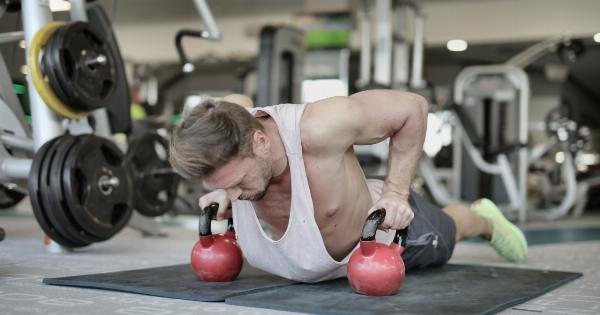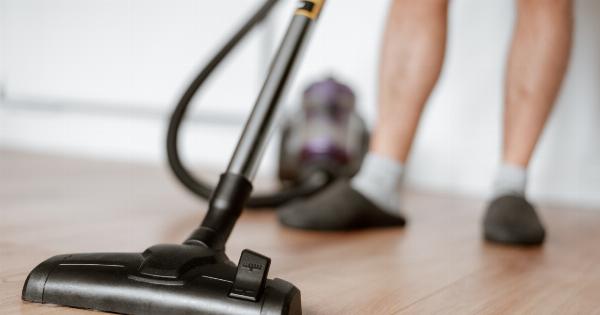Fibromyalgia is a chronic condition characterized by widespread pain, fatigue, and tenderness in certain parts of the body. It is estimated to affect about 2-8% of the population, predominantly women.
While there is no cure for fibromyalgia, there are several treatment options available to manage its symptoms. One such option is gentle exercise, which has been shown to be beneficial in alleviating fibromyalgia symptoms.
The Benefits of Exercise for Fibromyalgia
Exercise is often recommended as part of the treatment plan for fibromyalgia due to its numerous benefits:.
- Pain relief: Regular exercise has been shown to reduce pain and improve overall well-being in people with fibromyalgia. It stimulates the release of endorphins, which are the body’s natural painkillers.
- Improved sleep: Fibromyalgia often disrupts sleep patterns, leading to increased fatigue and worsened symptoms. Exercise helps regulate sleep patterns, leading to better quality sleep.
- Reduced fatigue: While it may seem counterintuitive, engaging in regular exercise can actually reduce fatigue levels. It improves cardiovascular health and increases stamina and energy levels.
- Enhanced mood: Exercise releases feel-good hormones called endorphins, which have a positive impact on mood. It can reduce anxiety, depression, and stress, all of which are commonly associated with fibromyalgia.
- Improved physical function: Fibromyalgia can limit mobility and physical function. Engaging in gentle exercise helps improve flexibility, strength, and overall physical function.
Choosing the Right Type of Exercise
When it comes to exercise for fibromyalgia, it’s essential to choose activities that are low-impact, gentle on the joints, and suitable for your fitness level. Here are some examples:.
- Walking: Walking is a low-impact exercise that can be easily incorporated into your daily routine. Start with short walks and gradually increase the duration as your fitness improves.
- Swimming: Swimming and water aerobics are excellent options for individuals with fibromyalgia. They provide resistance while being gentle on the joints.
- Cycling: Riding a stationary bike or cycling outdoors is a low-impact exercise that helps improve cardiovascular health, muscle strength, and flexibility.
- Yoga: Yoga combines gentle movements with breath control and relaxation techniques. It can help reduce pain, improve flexibility, and promote relaxation and stress reduction.
- Tai Chi: This ancient Chinese practice involves slow, flowing movements and deep breathing. It has been shown to improve balance, reduce pain, and increase overall well-being.
Getting Started with Gentle Exercise
Before starting any exercise program, it’s essential to consult with your healthcare provider, especially if you have any underlying health conditions.
They can provide guidance on the most suitable exercises for your specific needs and help create an individualized plan.
Here are some tips for getting started with gentle exercise:.
- Start slow: Begin with short durations of exercise and gradually increase the intensity and duration over time. Listen to your body and rest when needed.
- Warm-up and cool-down: Always begin your exercise session with a gentle warm-up to prepare your muscles and joints. Similarly, end with a cool-down to help prevent muscle soreness.
- Modify as needed: If a particular exercise causes discomfort or exacerbates symptoms, modify it or try a different activity. Find what works best for your body.
- Stay consistent: Consistency is key when it comes to reaping the benefits of exercise. Aim for regular exercise sessions, even if they are shorter in duration.
- Listen to your body: If you experience increased pain or fatigue after exercise, it’s essential to rest and recover. Pushing through pain can worsen symptoms.
Additional Considerations for Exercising with Fibromyalgia
While exercise can be highly beneficial for fibromyalgia, it’s important to keep a few additional considerations in mind:.
- Pace yourself: Avoid overexertion and learn to pace yourself. It’s better to start with shorter, more frequent exercise sessions than to push yourself too hard and risk a flare-up.
- Include strength training: Incorporating light resistance exercises into your routine can help improve muscle strength and support joint stability.
- Seek guidance: Consider working with a physical therapist or a certified fitness professional familiar with fibromyalgia to ensure proper form and technique.
- Listen to your body: Everyone’s experience with fibromyalgia is unique. Pay attention to how your body responds to different exercises and adjust accordingly.
Conclusion
Gentle exercise can play a significant role in managing fibromyalgia symptoms and improving overall quality of life. It offers a holistic approach by reducing pain, improving sleep, reducing fatigue, enhancing mood, and improving physical function.
Remember to choose low-impact activities that suit your fitness level, consult with your healthcare provider, and listen to your body. With regular and consistent effort, gentle exercise can become an integral part of your fibromyalgia management plan.































